The untold story: how Kerlink’s mastery of software-development best practices delivers critical benefits to customers. Part 5, Go Programming Language
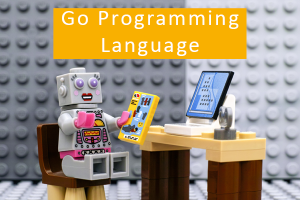
By Stephane Dejean – Kerlink CMO
Part 5 of our five-part series explains how Go programming language facilitates and accelerates large-scale programming efforts and simplifies application maintenance and evolution. We also highlight four specific customer benefits of using Kerlink’s software design methods.
Kerlink is widely recognized for its highly reliable connected hardware, including its well-established Wirma or Wirtrack product range, and for the quality, robustness and all-around performance of its Wirnet LoRaWAN network-infrastructure solutions. Kerlink was the first provider of commercial, carrier-grade gateways and recently extended its premier industrial-grade iSeries with new indoor and outdoor products.
As a full-service, turnkey Internet of Things (IoT) solutions provider, the company also offers proven quality software development. With particular expertise in network management, orchestration solutions and value-added services such as geolocation and remote device management, Kerlink has more than 120,000 installations with more than 330 clients in 69 countries. The quality of its software is increasingly being recognized by demanding and experienced industrial users. The selection, adoption and mastery of software-development best practices drive Kerlink’s business model and the richness of its service portfolio.
Not only are these IoT solutions perfectly synchronized with the latest LoRaWAN specifications, they also leverage the flexible, efficient and open methods of software design and management to meet the scalability, security and usability requirements of Kerlink’s customers worldwide.
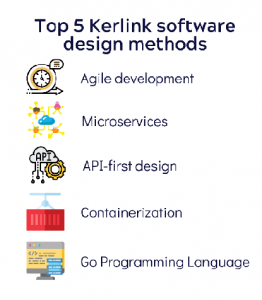
The series:
- Method 1: Agile Development – March 19
- Method 2: Microservices – March 26
- Method 3: API-first Design – April 2
- Method 4: Containerization – April 9
- Method 5: Go Programming Language and Direct Benefits to Customers – April 16
In this five-part series, we will explain our top software design & development methods that benefit our customers and show that the company is at the forefront of software design, development methods and architectures.
Part 5: Go Programming Language
Developed by Google, the Go (also known as Goland) open-source programming language is used to write applications, scripts and support orchestration of large IT systems. It facilitates and accelerates large-scale programming efforts, and simplifies application maintenance and evolution.
Kerlink chose to use Go for three primary reasons. First, Go was built with an asynchronous execution engine that makes it easier to manage input and output. Second, the learning curve is shorter using Go than more traditional software languages. And third, Go offers strong data type and fine memory management. These benefits aid in the development experience by not requiring coders to manage multiple threads themselves.
Go has several benefits for Kerlink customers. First, it facilitates delivery and maintenance of customers’ applications. Second, Go also makes it possible to optimize the use of the IT resources (e.g., CPU, RAM, and others) which reduces IT spend for Kerlink and Kerlink customers. Go has greatly benefitted Kerlink: by using Go, Kerlink has reduced the amount of IT resources required to support customers’ software delivery and maintenance by 50% per year.
By using Go, Kerlink can pass-on these tremendous cost savings to its customers and keep software delivery and maintenance prices highly competitive.
Four customer benefits from Kerlink’s software design methods
Modern and innovative choices in software design and development methods including agile development, microservices architecture, API-first design, containerization and the Go Programming Language, allow Kerlink to create solutions that are easy and flexible to deploy and manage. This allows Kerlink to integrate and orchestrate a host of different services. And the benefits derived from Kerlink’s software design methods accrue to Kerlink’s customers. Below, we discuss four key customer benefits from Kerlink’s software design methods.
Benefit #1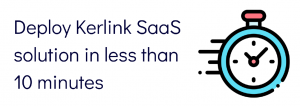
The software design methods chosen by Kerlink greatly speed a customer’s time-to-deployment for both the Kerlink SaaS- and on-premises-based models. For example, Kerlink can deploy a dedicated instance of its SaaS- based loT solution for its enterprise in less that 10 minutes.
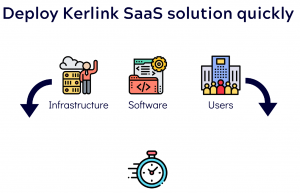
And even in cases of an enterprise on-premises deployment of the Kerlink IoT solution, Kerlink’s customer would simply configure:
- infrastructure including provisioning, setting up a cloud account and enabling security elements,
- software including up-to-date versions, certificates, and licenses,
- users including proper domain names, logos overall access control.
Once these configurations are successful and tested by the customer, Kerlink completes the automated, remote deployment of Kerlink’s IoT solution. This entire on-premises deployment process, including test and acceptance, can take less than a couple hours!
Benefit #2
An IaaS-architected solution moves infrastructure risk from the customer to an IoT platform vendor by minimizing the risks of service disruptions, large-scale data losses or local data failures.

Kerlink’s software-enabled DevOps approach not only consolidates development, operations and support methods, but also takes into consideration disaster recovery scenario testing in early stages of design and deployment, making it more resilient, performant and scalable.
On the customer side, an IaaS-architected solution makes it possible for an enterprise to optimize the way it responds to customer service challenges and conduct overall internal maintenance and evolution of the IoT solution.
Kerlink’s choice of software development methods – whether agile software development with a set of microservices, an API-first design, containerization or forthcoming blue-green deployment methods – speeds an enterprise’s ability to update, replicate or rollback execution environments and customer-specific data if the need arises during operations.
Benefit #3
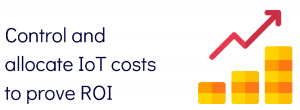
Kerlink’s analysis tools, its microservices approach and IaaS architecture, make it possible to surgically associate an enterprise’s technology resources with tenants using these resources.
As such, it is then possible to allocate the quantity of IaaS required to the needs of each business process both in terms of volume required and time period, while securely enforcing access rights management to segregate and streamline the use of federated capacities.
The more finely that an enterprise can allocate the costs of an IoT solution to users, tenants and platform resources, the more precisely an enterprise can calculate ROI from the overall IoT solution, even potentially enabling an IaaS pay-per-use model depending on real-time resource consumption. This enables an enterprise to justify continued investment in its chosen solutions.
Benefit #4
Having a focus on software design and development has given Kerlink the ability to rapidly and dynamically adapt its organization and technology to maximize client speed-to-market and efficiency. By allowing continuous production releases, Kerlink customers benefit from rapid advancements in applications, management tools and platforms.

These advancements improve the speed that enterprises can deploy and support their IoT solutions. A software design framework allows Kerlink to develop a set of automated operations tools to foster fast, reliable and flexible delivery of solutions.
Conclusion
Hardware & software that ensure interoperability throughout the IoT chain
The choices made in Kerlink’s methods, architectures and support tools illustrate the company’s maturity and innovation in software design, deployment management and operations management in highly demanding customer environments. Kerlink believes in providing open, interoperable and reversible solutions matched to industry standards to provide exceptional customer experience and ensure the ongoing development of its solutions to support customers’ growing and evolving businesses.
Kerlink’s carrier-grade hardware and industrial-grade software expertise ensures interoperability of all functional components of the IoT chain, including embedded gateway software and server-side applications. Customers have come to rely on Kerlink’s expertise as the leading one-stop-shop partner in the design of infrastructure and applications to support IoT network management and low-power wide-area (LPWA) private and public networks, in particular.
Continuous production releases
Kerlink’s choice of agile development, microservices architecture, API-first design, containerization and Go programming language has strengthened Kerlink’s IoT solution-development efforts. And we have shared these benefits with our valued customers by providing the ability to deploy a Kerlink solution in minutes, minimize risks throughout IoT solution-operations management, control IoT solution costs at a refined level and decrease deployment time.
By allowing continuous production releases, Kerlink enables its customers to benefit from rapid advancements in applications, management tools and platforms. These advancements improve the speed at which enterprises can design, deploy and support their IoT solutions. A software-design framework allows Kerlink to develop a set of automated operations tools to foster fast, reliable and flexible delivery of solutions for its customers.
We hope that you enjoyed the read during the past 5 weeks!
You can now download the full white-paper at https://bit.ly/2xp18bp


